Restored Plymouth Arrow Funny Car
— State-of-the-art Keith Black HEMI® engine nitromethane-fueled ’80s AA/Funny Car
— Kenny Bernstein’s First Budweiser-backed racecar
— Original member of the exclusive Cragar 5-second Funny Car Club
The Arrow body was very popular in the Funny Car ranks at this time and racers chose this Plymouth shell regardless of if they were sponsored by Mopar® or not. These stylish bodies had large, flat body panels and their on-track performance certainly proved they were aerodynamically sound, if not superior to any of the other fiberglass Funny Car body styles running at the time.
Kenny Bernstein ran this car in 1979 as the Chelsea King, and won the IHRA Winston Championship and a national event win in the NHRA. While it was a decent year competition-wise for the Texas-based racer, it was a special trip he had taken to the Anheuser-Busch headquarters (parent company to Budweiser Beer) in St. Louis, Missouri, for a meeting that really made 1979 a memorable one in Kenny Bernstein’s racing career.
The result of that trip to Budweiser was a one-year deal to run the car as “The Budweiser King” starting in the 1980 racing season, and with new Kenny Youngblood-designed graphics and paint. This Budweiser contract gave Bernstein the outside funding to continue racing in the grand style he wanted, and not long afterwards the chain of restaurants were sold, making Kenny Bernstein a full-time, professional drag racer. And racing full-time with a big sponsor to please takes lots of money. In an interview done by George Phillips of National Dragster after the season concluded, Bernstein revealed that he had spent in total some $253,000 in expenses during the 1980 season, and that didn’t include the initial investment.
480-CID ALUMINUM GEN II SUPERCHARGED HEMI ENGINE
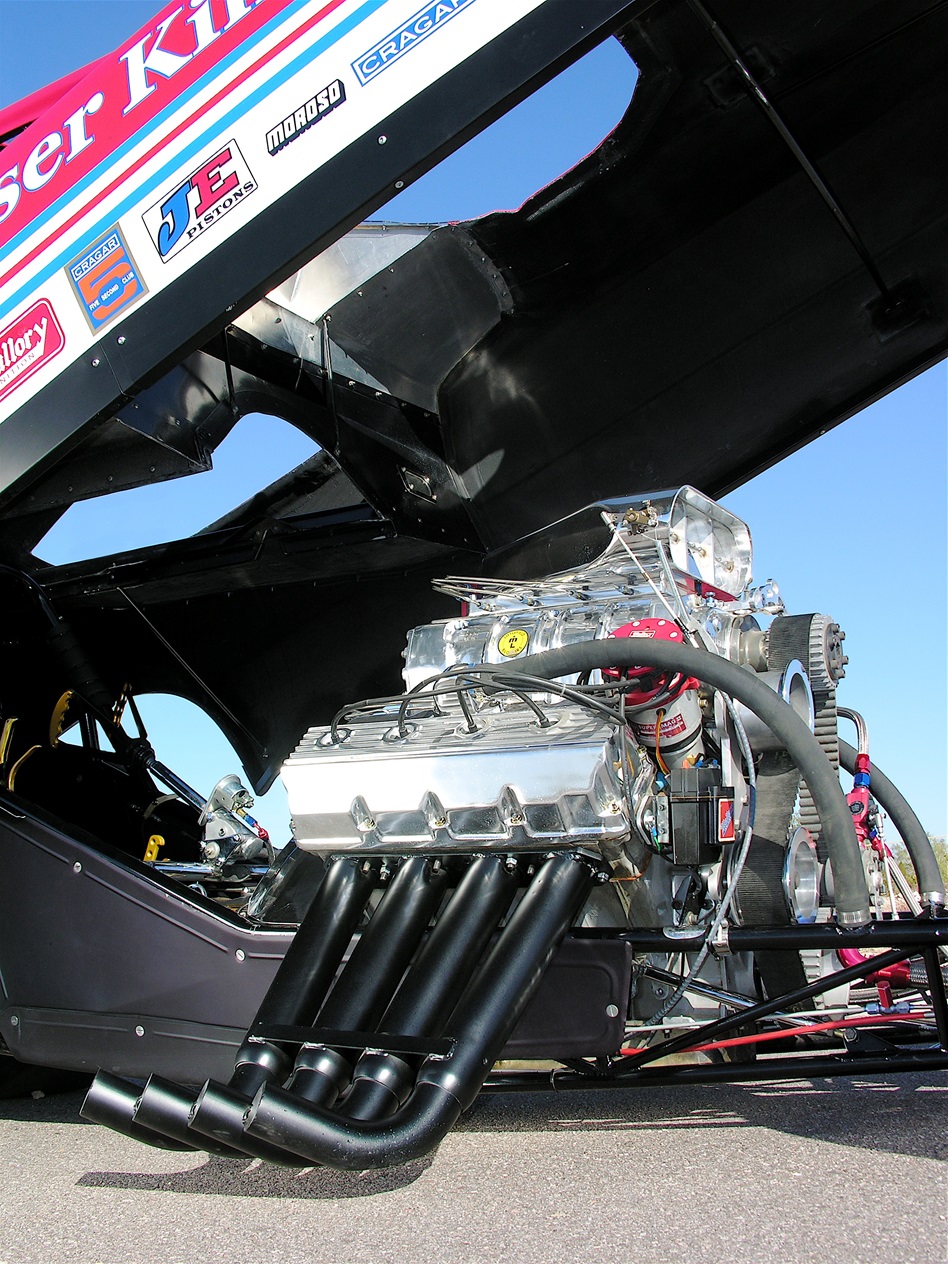
For the restoration, a complete aluminum HEMI engine, using a Keith Black block, heads, 8-71 supercharger, up-swept zoomie headers, plus everything else was obtained to re-create the era-correct engine for the car.
KENNY YOUNGBLOOD PAINT SCHEME
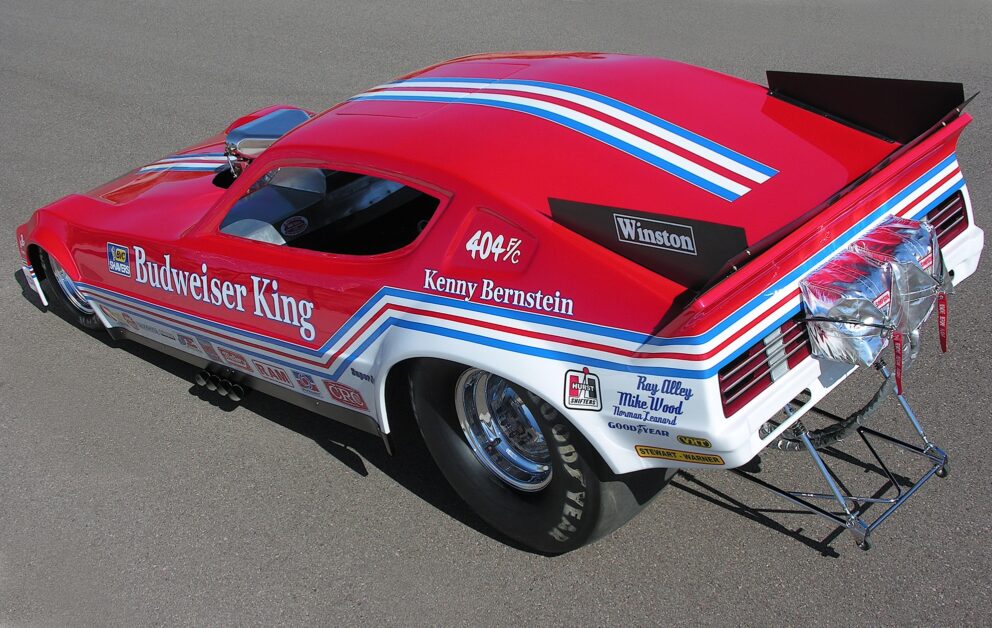
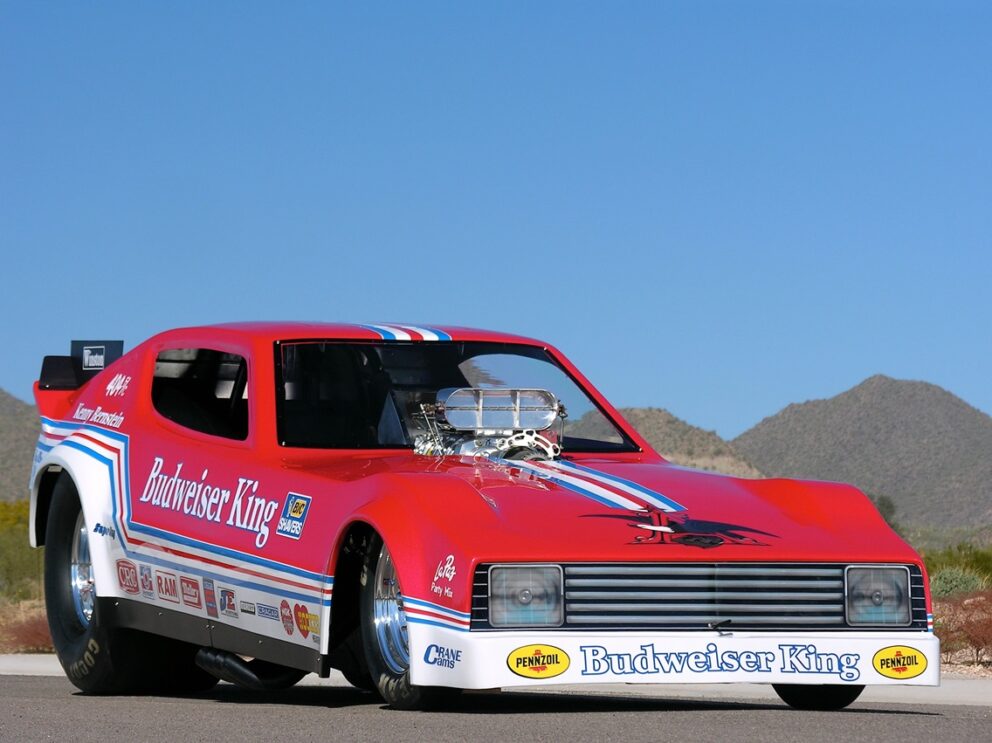
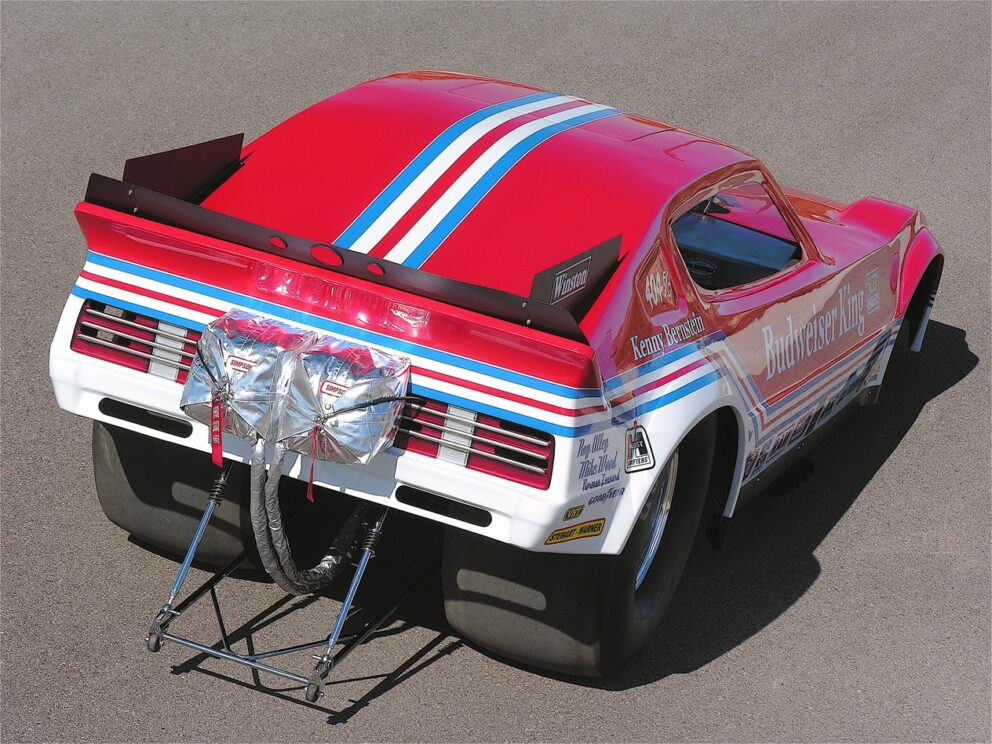
Creative graphic designer Kenny Youngblood had penned the graphics and the paint work was done by Tom Stratton, in red and white Imron. The thought behind this was done in a style that photographed well and the major sponsor’s brand name was clearly seen on television and from the grandstands. Today, the car’s visuals were faithfully reproduced.
THE EAGLE PROUDLY DISPLAYED
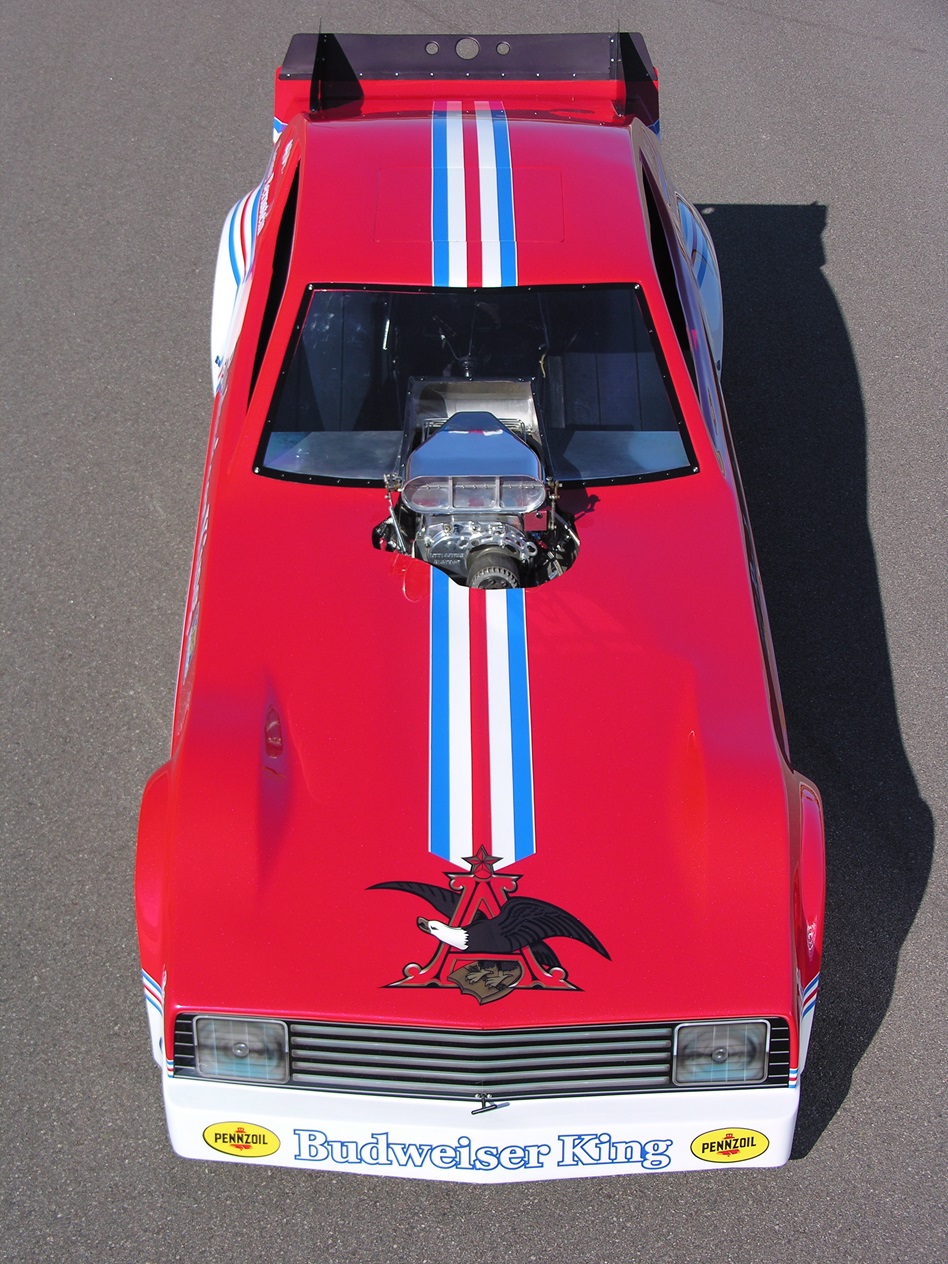
The initial idea to pursue Anheuser-Busch as becoming the primary sponsor of his racing operation came from the urging of the Austin, Texas, area Budweiser rep, Dan Brown, who felt it would be worth a shot to inquire with the decision makers at the main office in St. Louis. The Anheuser-Busch eagle logo, an intertwined A and eagle, was added to the front of the Plymouth Arrow body and it was followed by the stripes that Youngblood incorporated into the overall graphics.
ATTENTION TO DETAILS
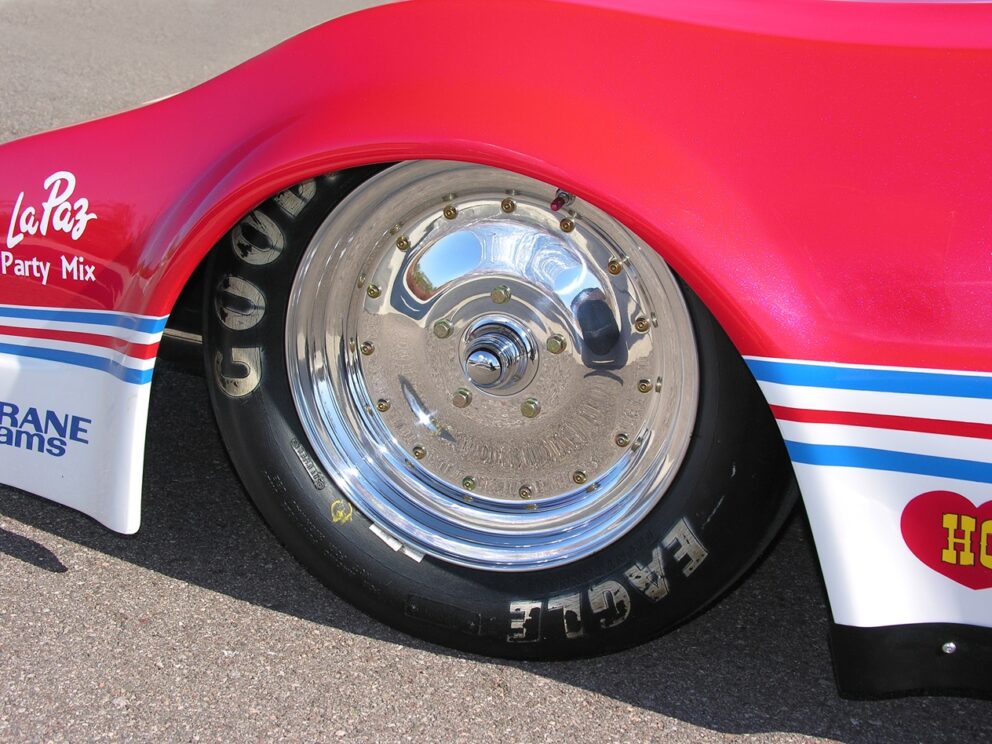
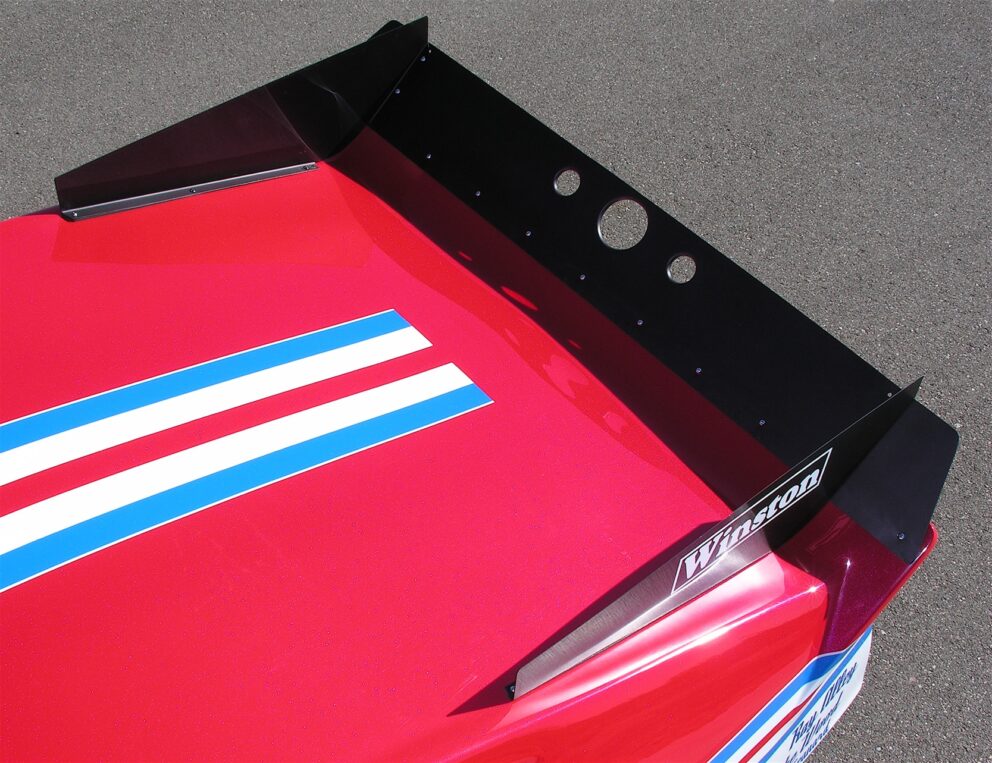
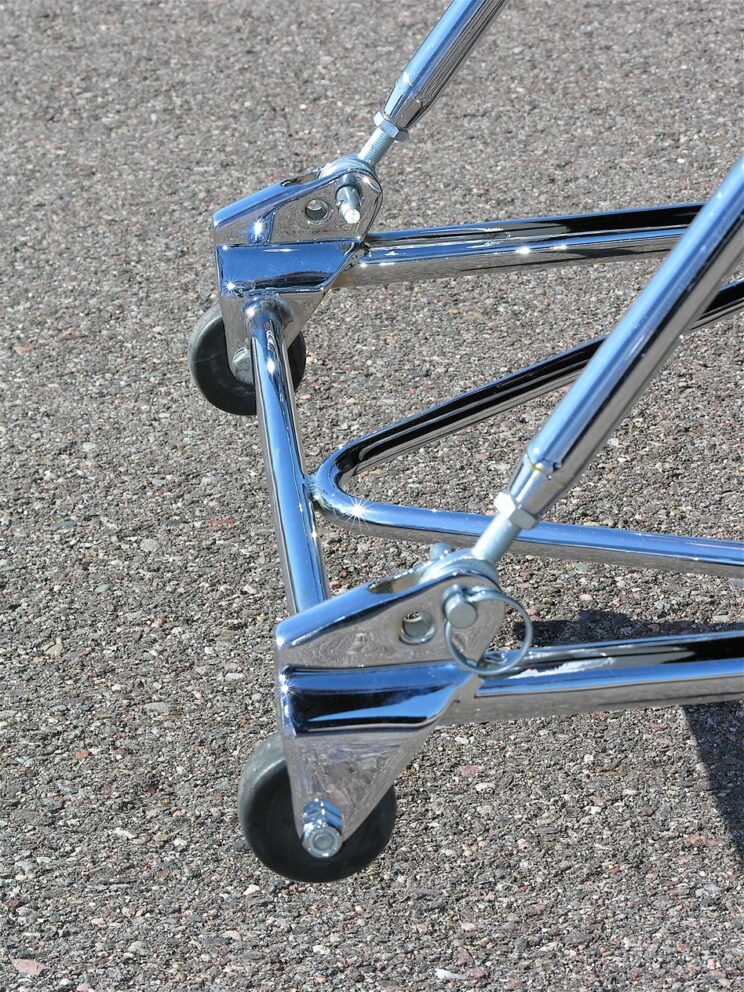
Polished Cragar Super Trick aluminum 15 x 3.5-inch wheels, aluminum black anodized rear spoiler with spill plates, and the car’s original adjustable wheelie bar were re-chromed during the restoration.
DRIVER’S VIEW OF THAT NITRO HEMI ENGINE
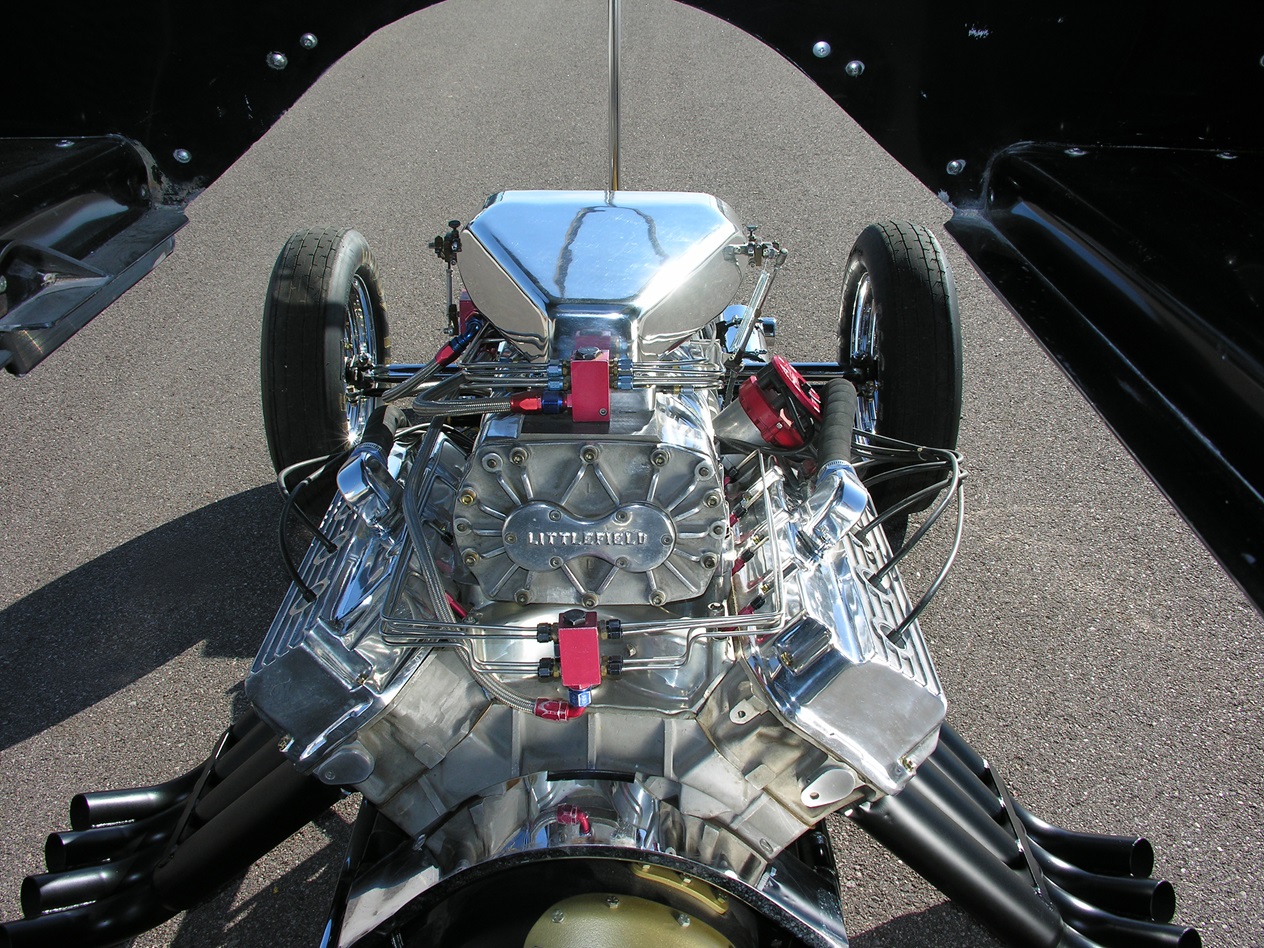
This is what the Keith Black aluminum HEMI engine looks like from inside the driver’s seat – single magneto, 8-71 blower and exposed cast aluminum valve covers, back when things were more simple and “pure!”
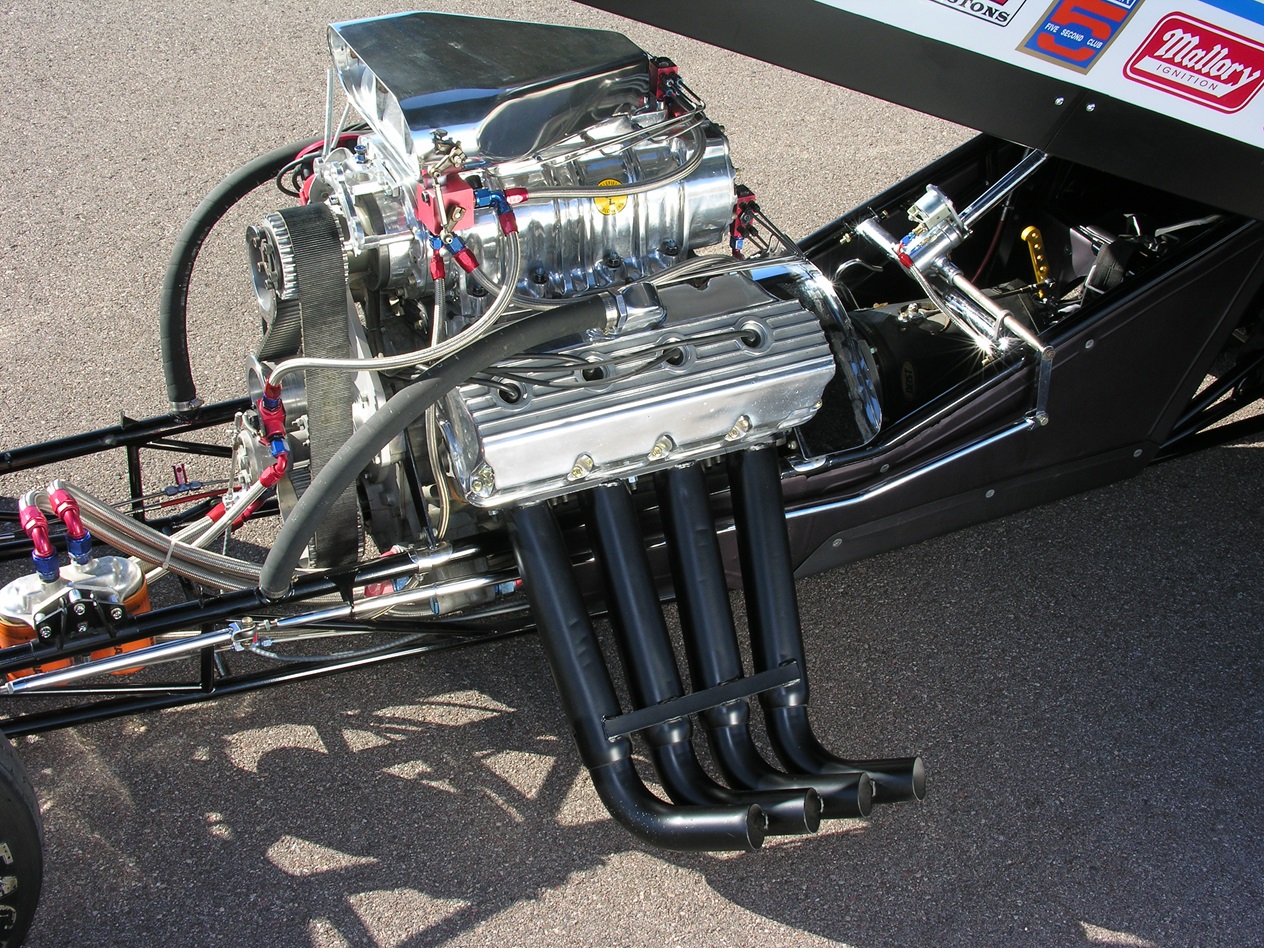
The 480-cube HEMI engine received a stroker crankshaft to achieve that enlarged displacement, the plumbing to the supercharger and Enderle injector was plumbed (fuel lines, nozzle jets, barrel valve, check valve and distribution block), in the same manner as seen in photographs of the original version.
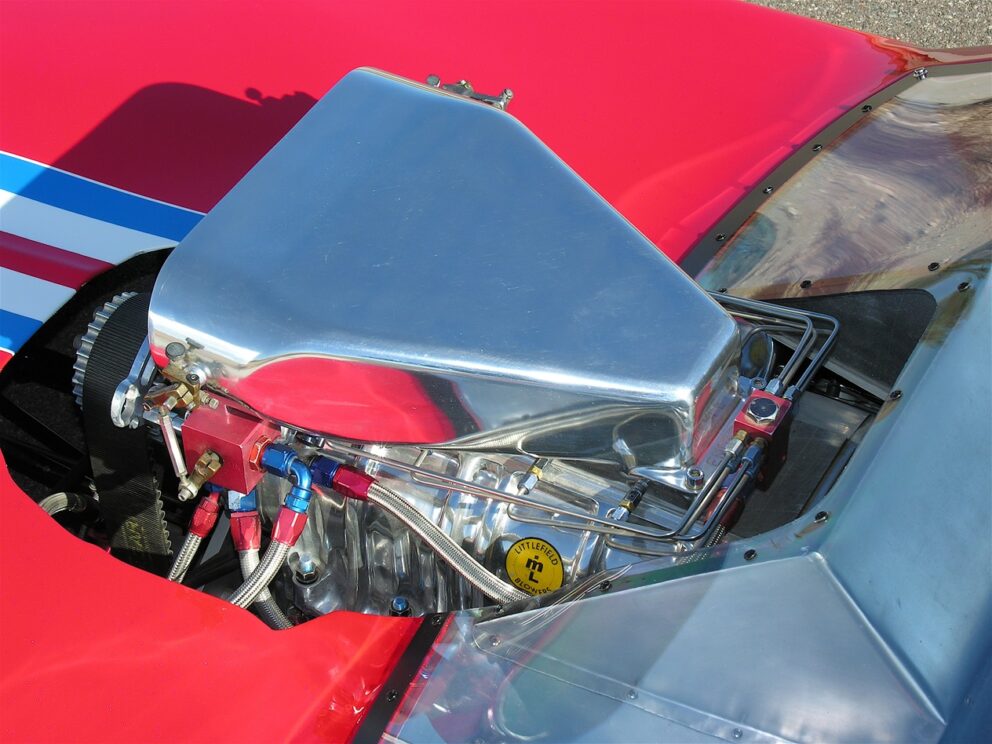
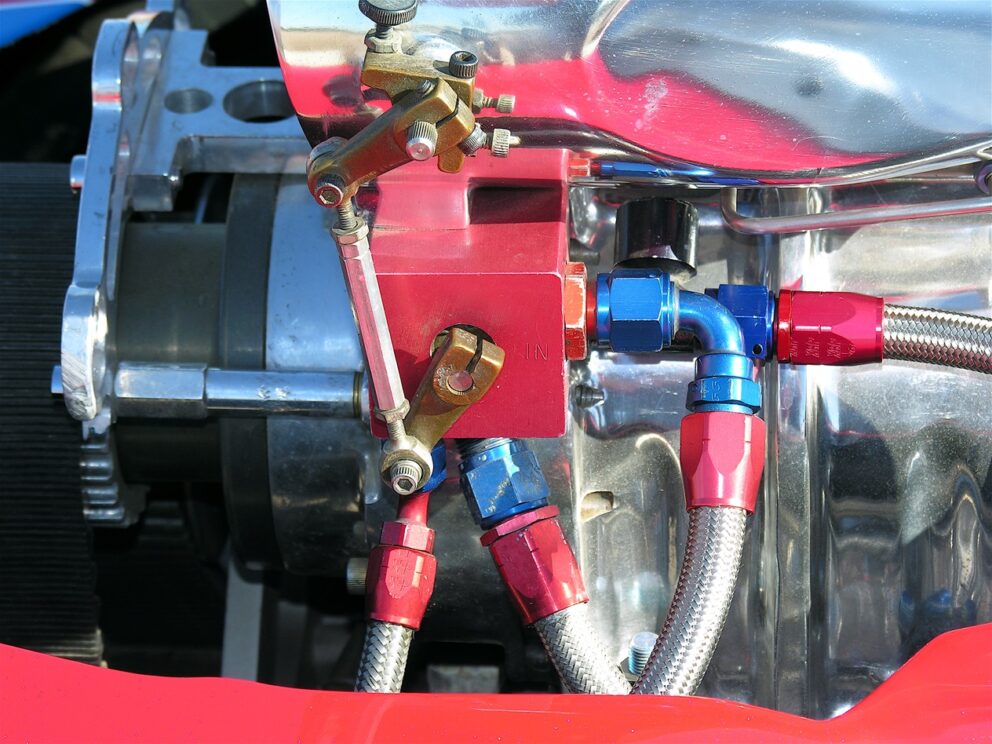
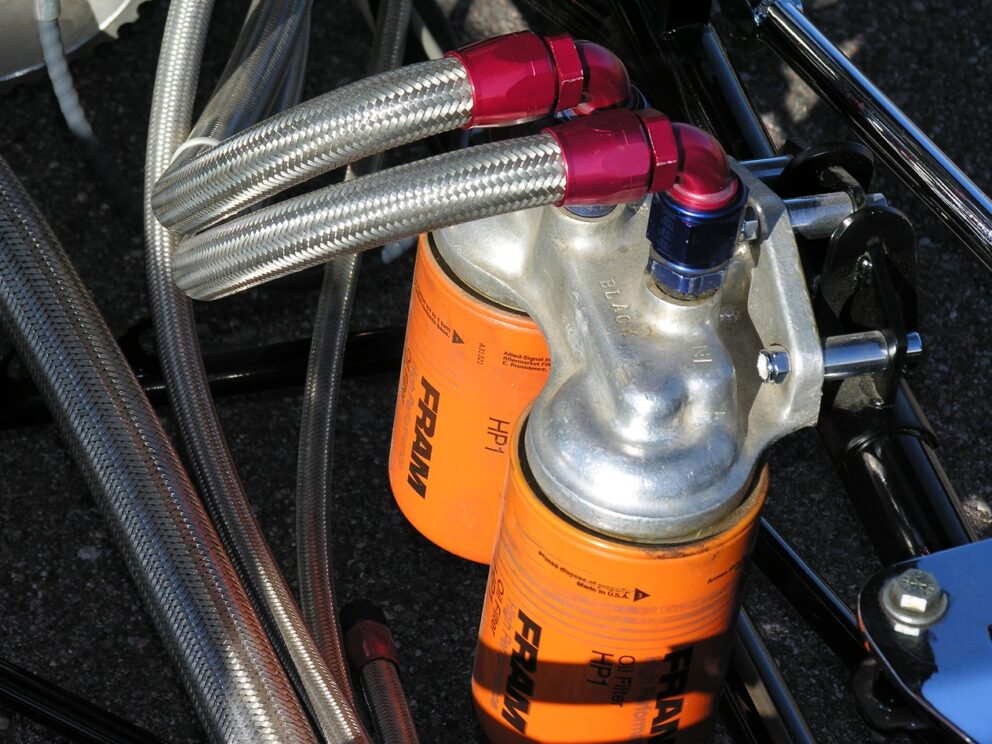
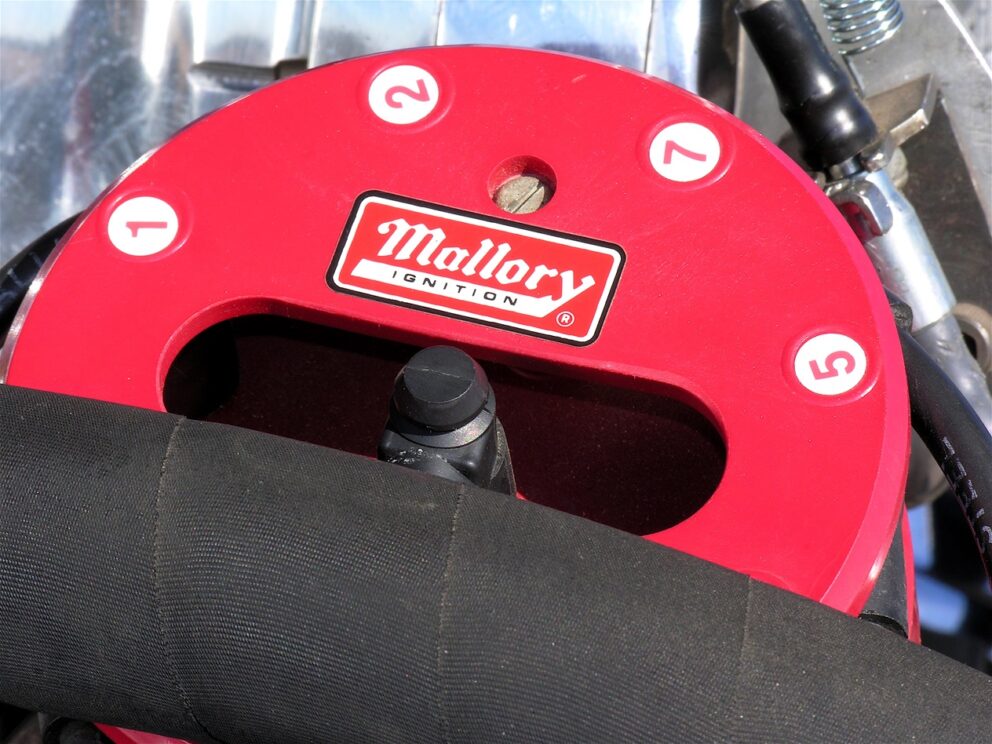
120-INCH H&H RACECRAFT CHASSIS
H&H Racecraft provided the chassis for the car when it was originally built, with it staying with the original body all the years later. Pat Foster and Jim Hume were the talented men that were responsible for the design and construction of the 120-inch wheel-based chassis, and it was what the top cars of the era ran in NHRA and IHRA competition.
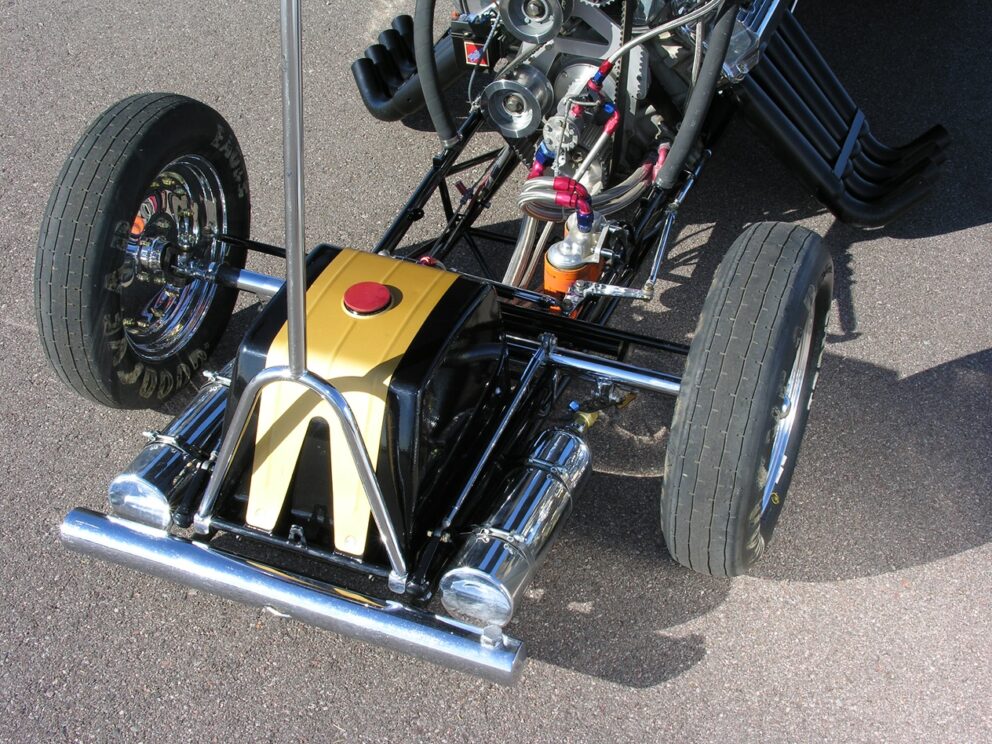
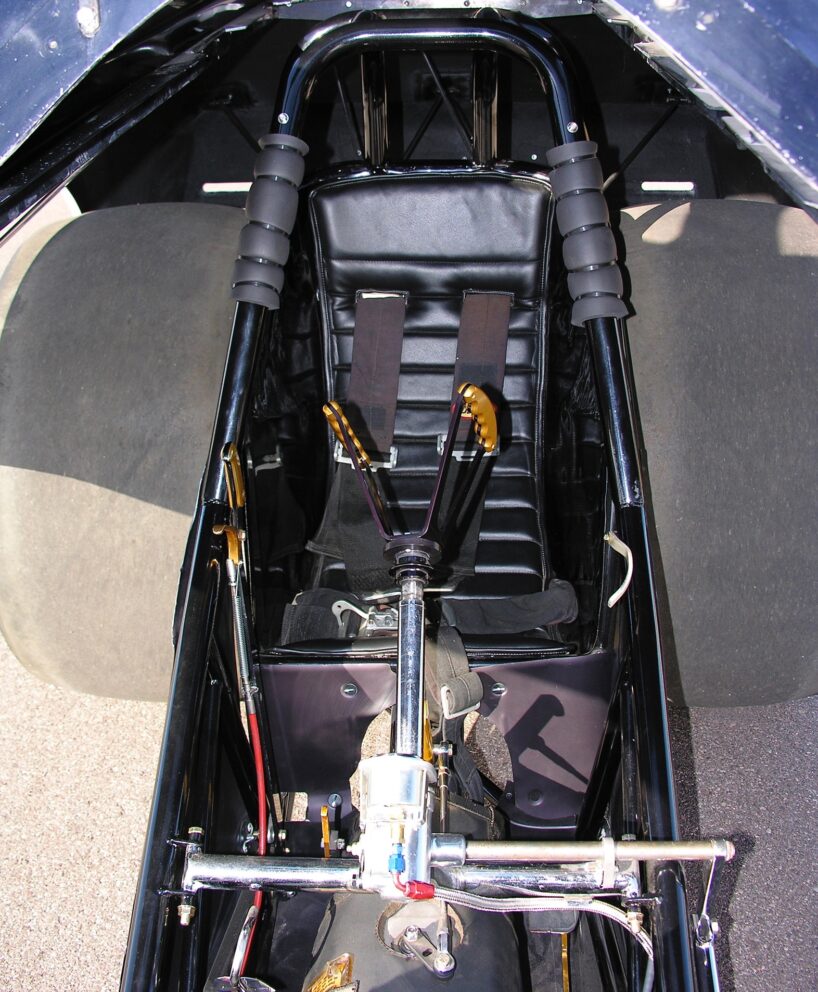
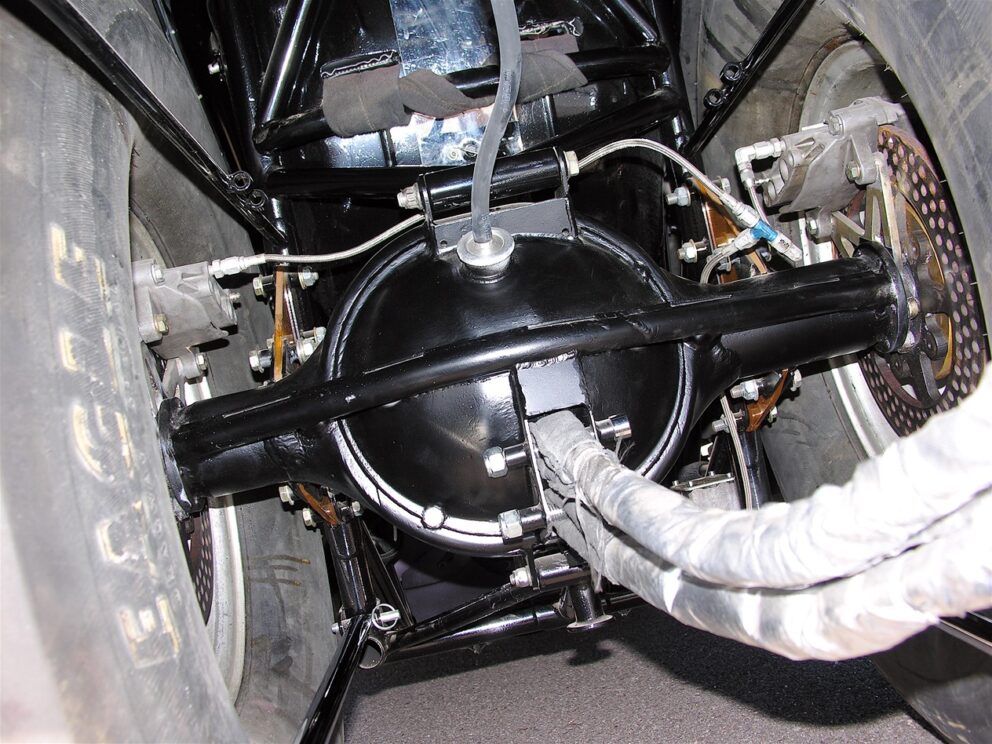
H&H incorporated a torsion bar front suspension setup and fuel tank located as far forward as possible, along with Freon tanks and weight bar. No front brakes on the car. Cockpit featured minimal upholstery and roll bar padding. Reinforced 9-inch differential with 3.90 and 4.10 gearing (depending on the track) and aluminum center section.
ALL PAINT – NO STICKERS
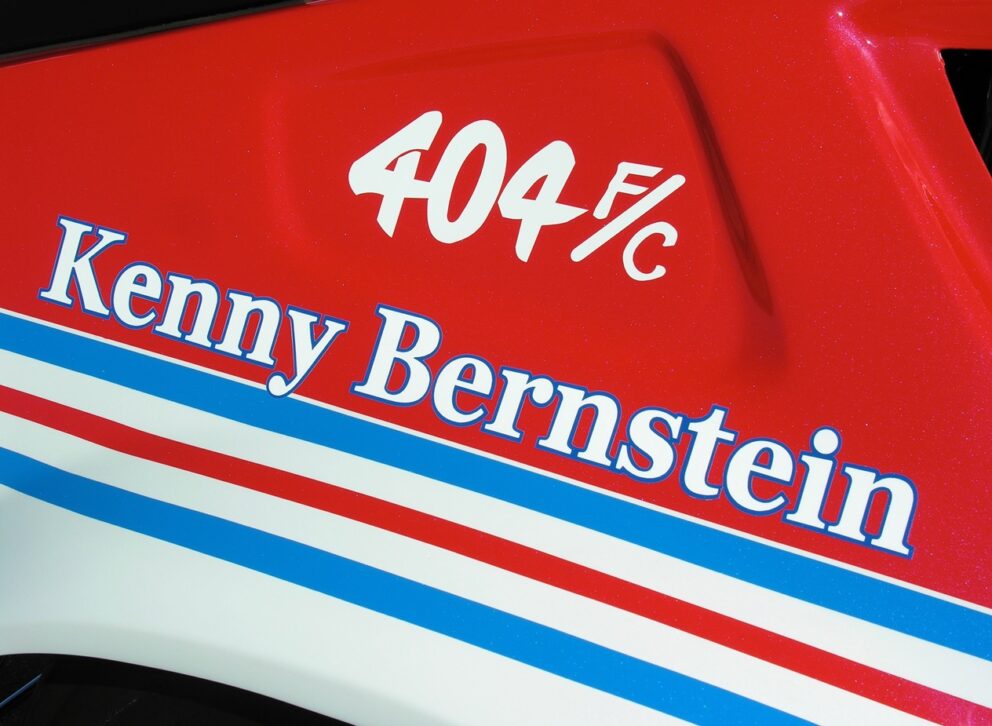
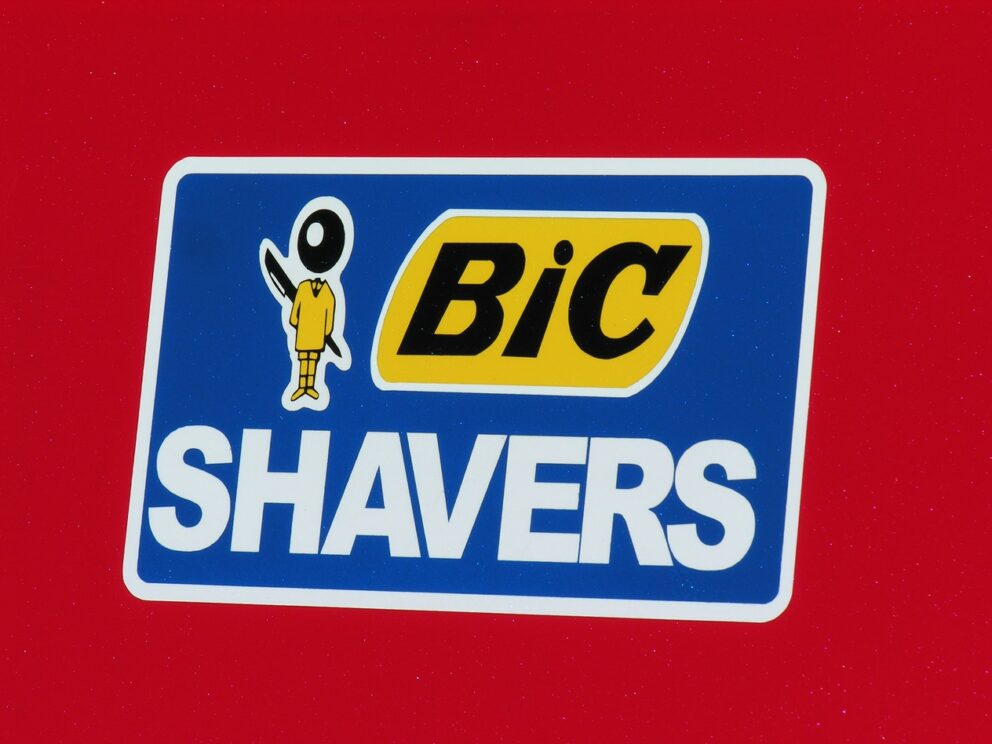
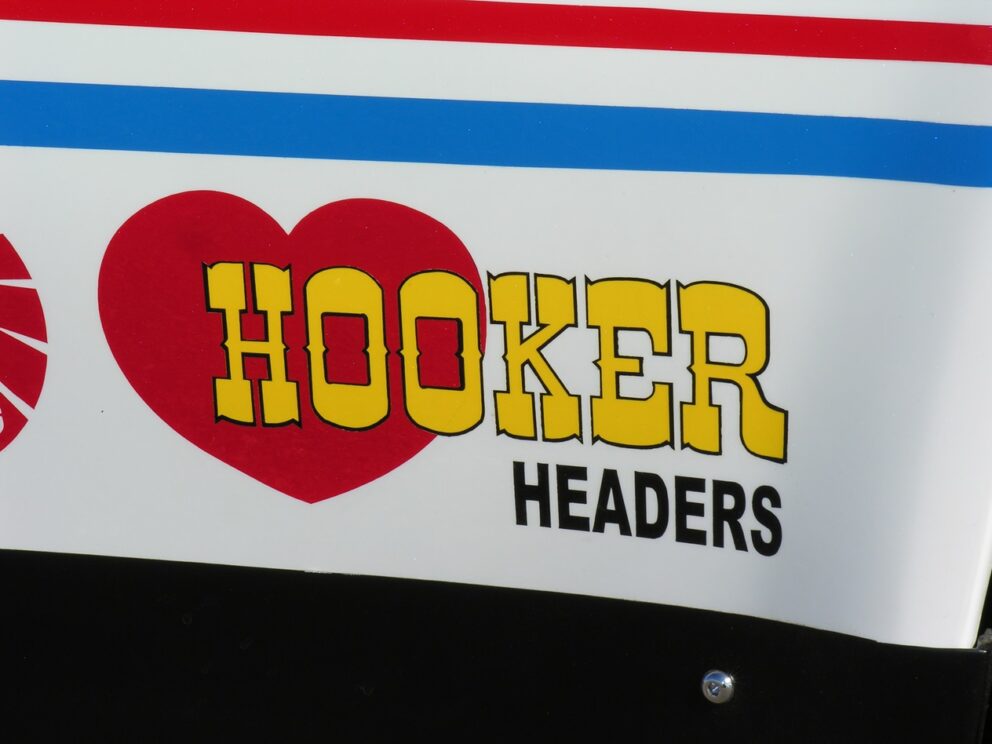
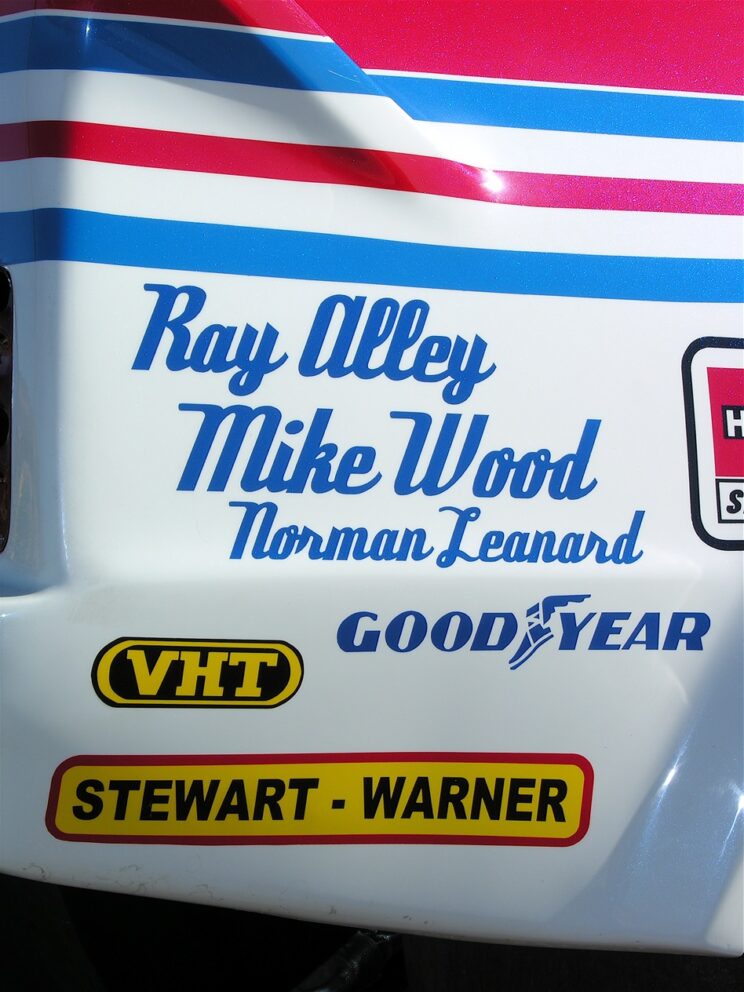
There are no decals here! Everything is painstaking painted on with utmost care in accuracy, correctly replicating the original sponsor logos and markings.
1:24 FLIP-TOP DIECAST OF THE CAR
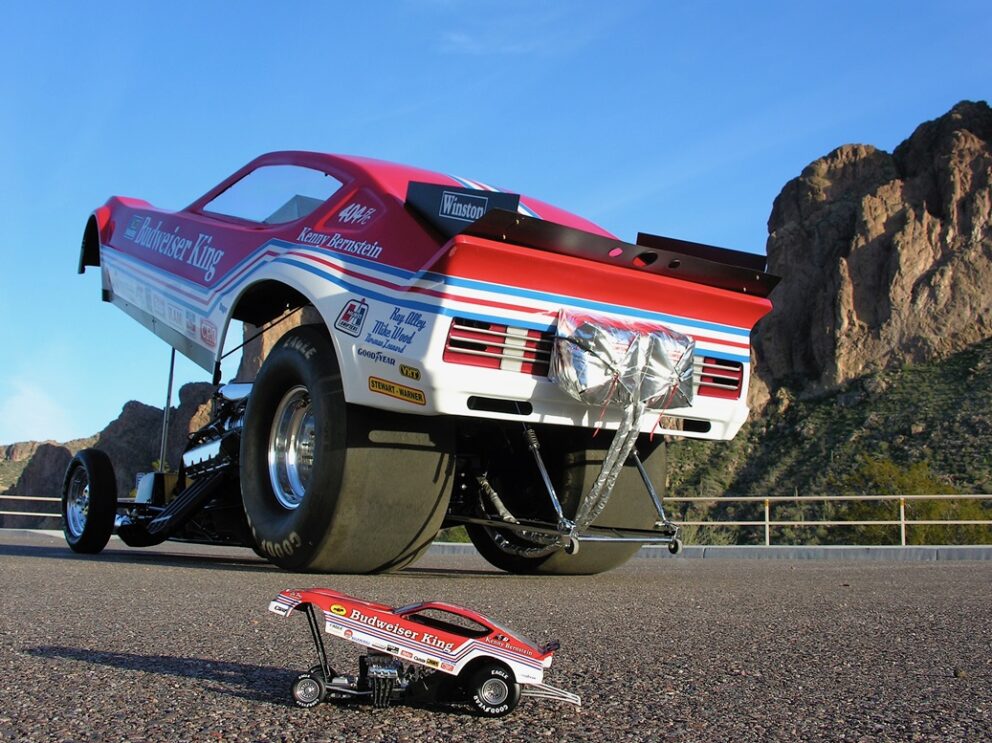
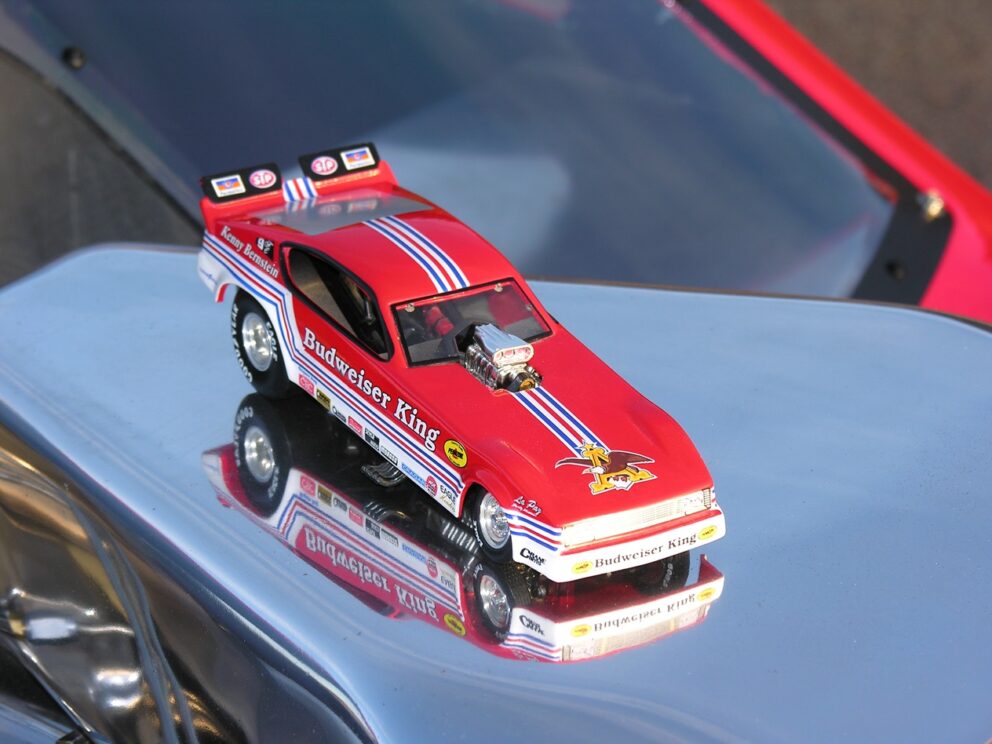
Racing Collectibles did a 1/24 scale diecast of the Budweiser King car in a 2,500-unit run, which still pop up at swap meets and eBay today.
BACK IN THE DAY
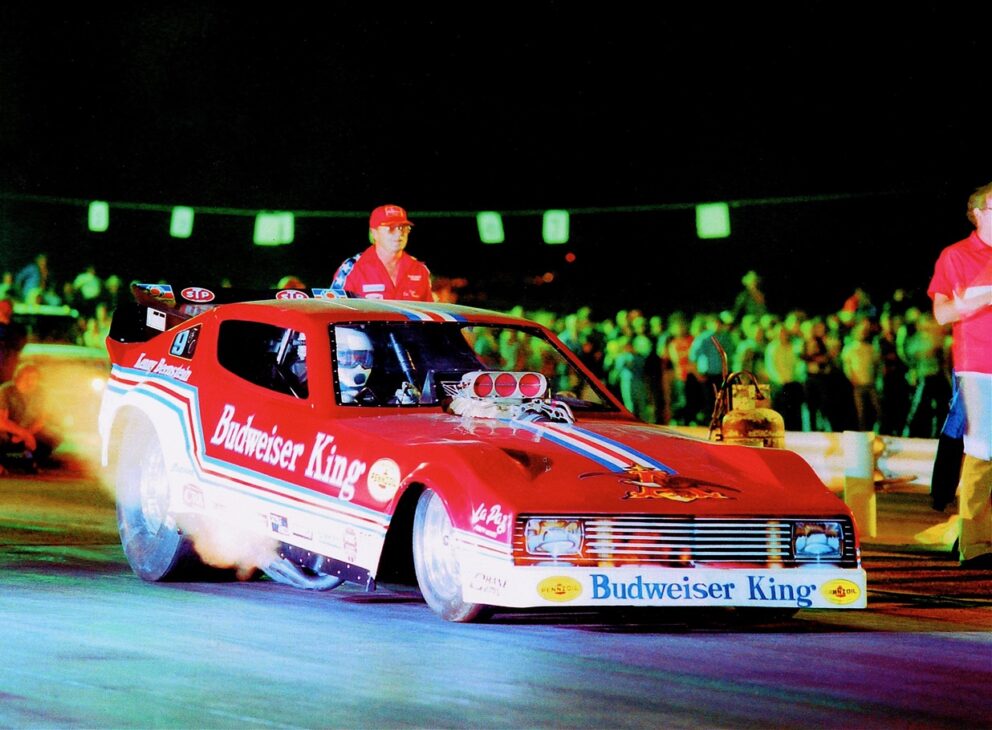
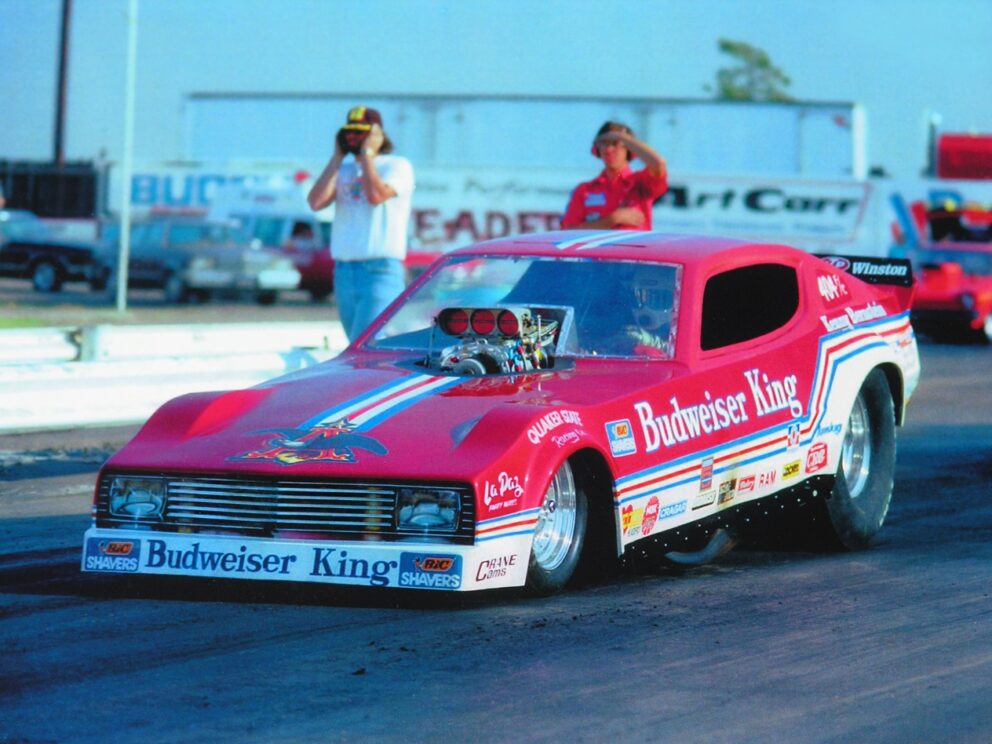
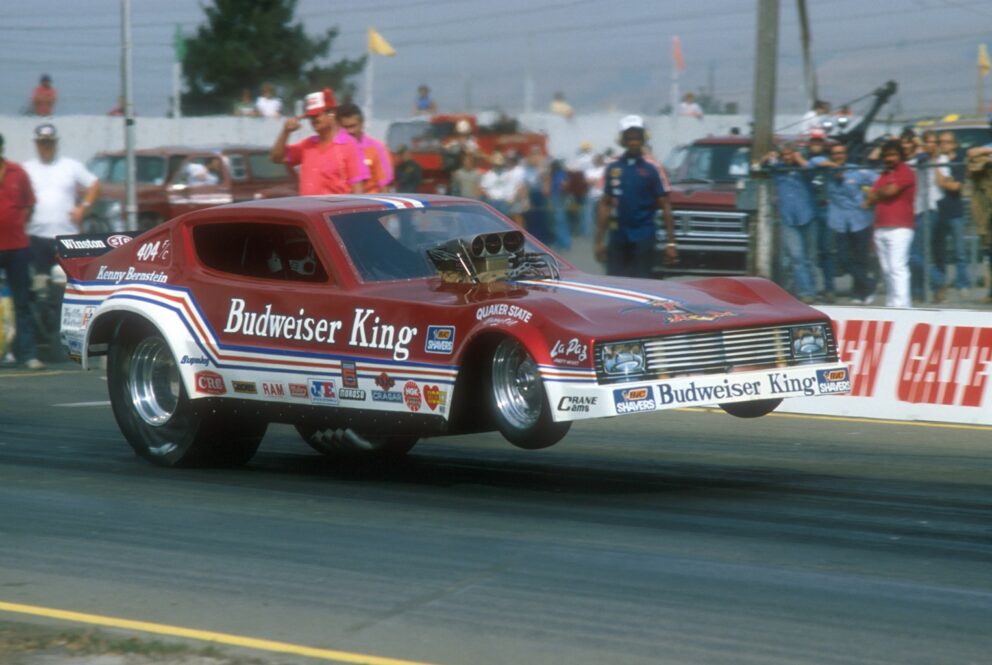
Dry hops and long smoky burnouts were standard procedure back in the day, much of what made these fabulous old Funny Cars so popular in the first place. OCIR (Orange County International Raceway), drag racing’s “Mecca” track that was located in East Irvine, California, is where the car ran often day and night events. That’s crew chief Ray Alley in the night shot, staged up complete with nitromethane flames!
Kenny recalled the numbers of that deal put together in St. Louis back in 1979 to get the name Budweiser on the car. “It wasn’t some million-dollar deal. That first money from St. Louis was $25,000,” Bernstein said. “The rest I got from wholesalers. I got 10 of them to put in $4,000 each, and the local region matched it. That was $80,000 – enough to run the car.”
BEAUTIFUL AND WELL-DETAILED
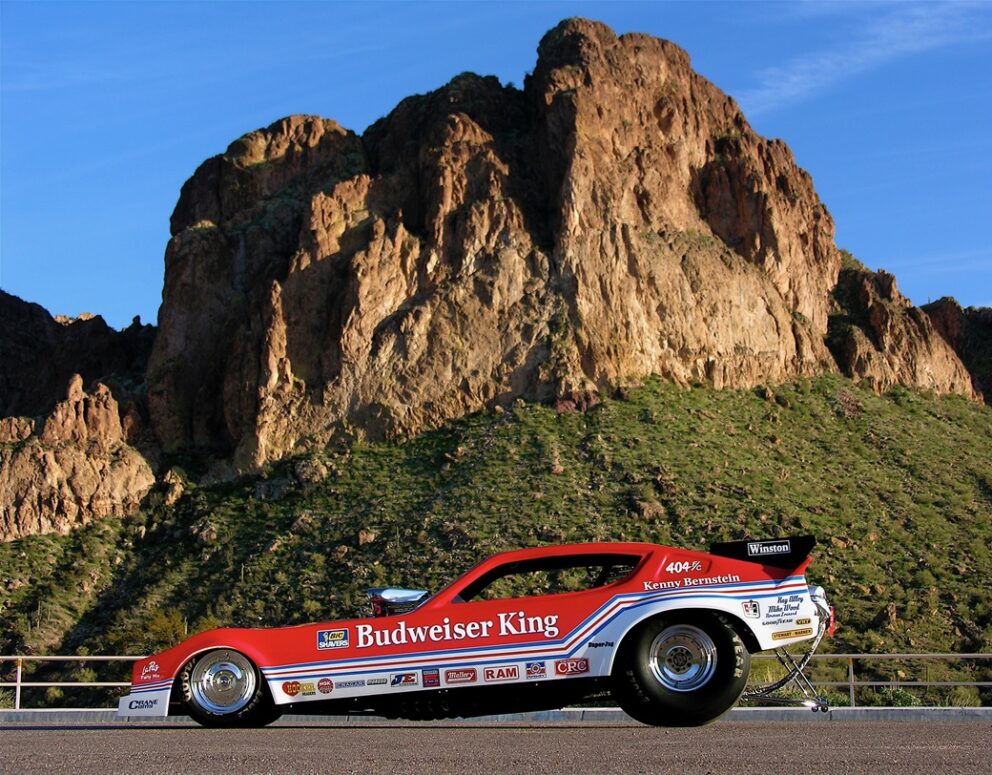
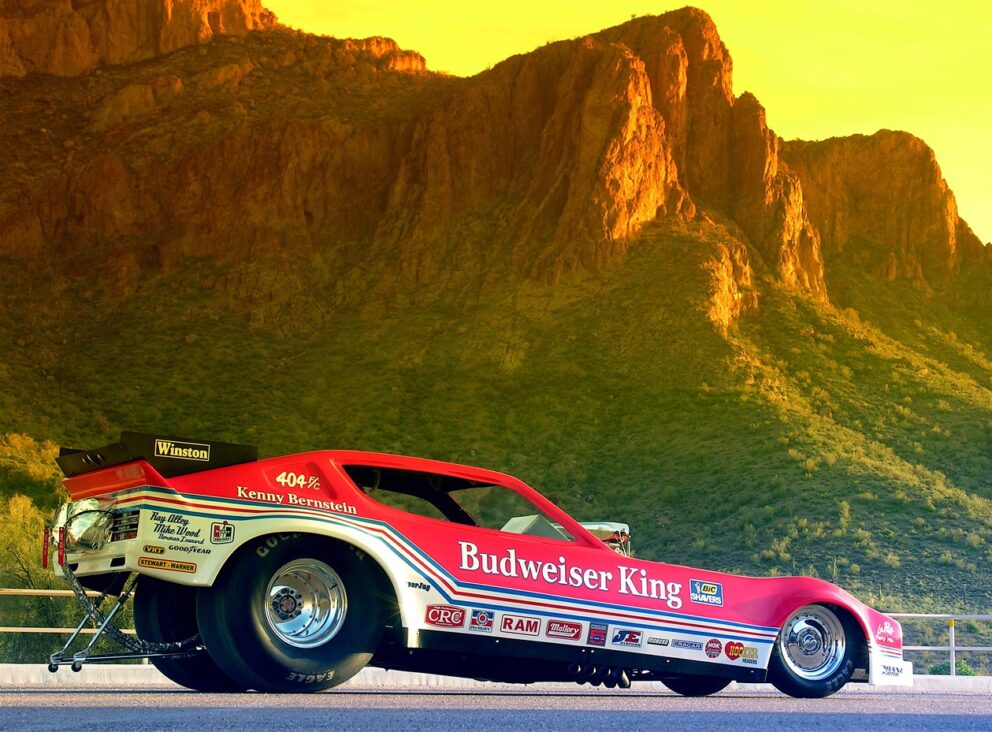
The stance, the paint and the graphics all add up to a rolling masterpiece, a very proper restored representation of one the best examples of the Arrow-bodied Funny Car from the 1980s.
MEMBER OF THE FIVE SECOND CLUB
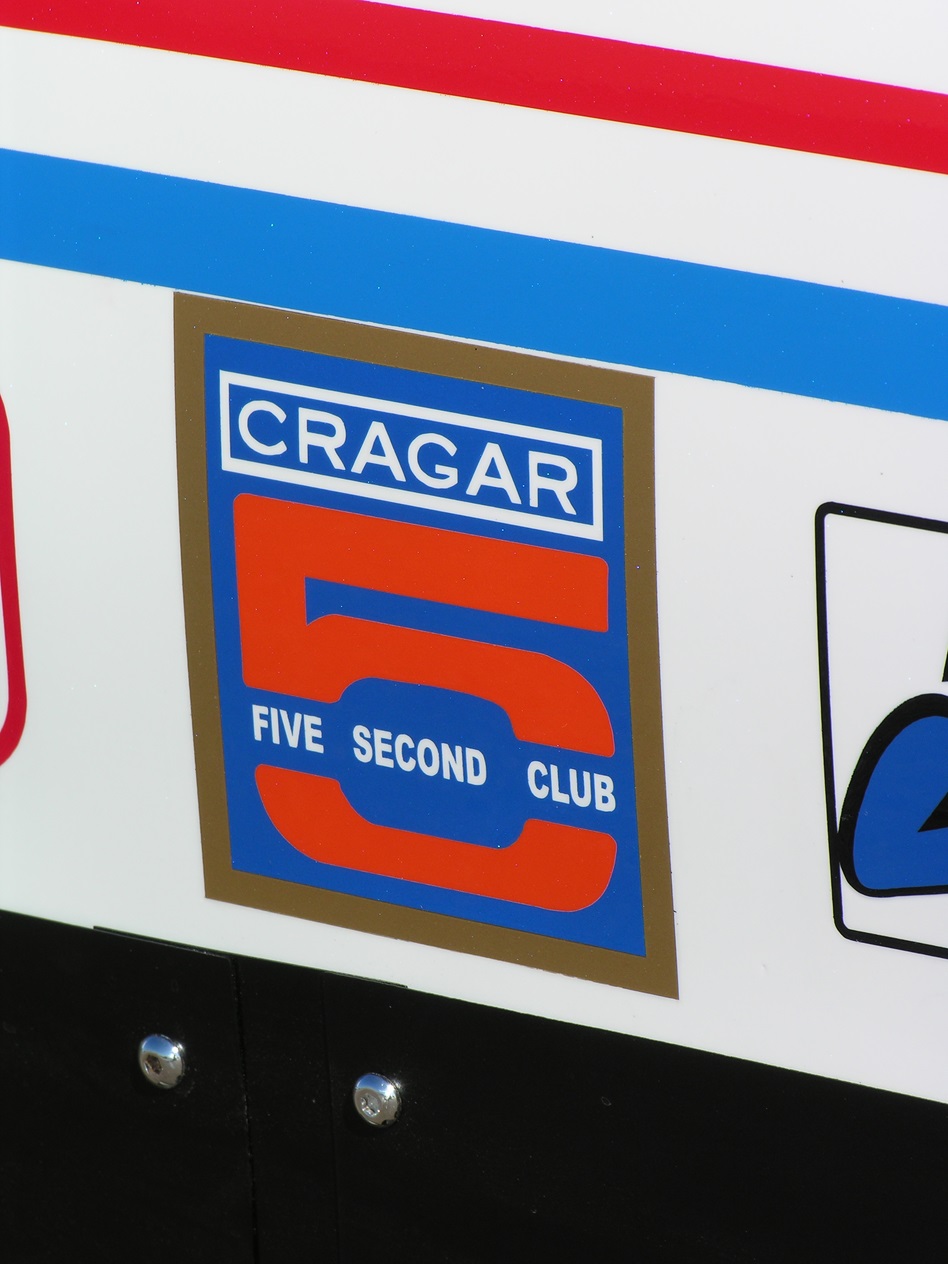
The Budweiser King Plymouth Arrow joined the exclusive Cragar Five Second Funny Car Club on March 15, 1981, with a blistering 5.99-second pass that occurred in Gainesville, Florida.
FIBERGLASS PREPARATION PROCESS
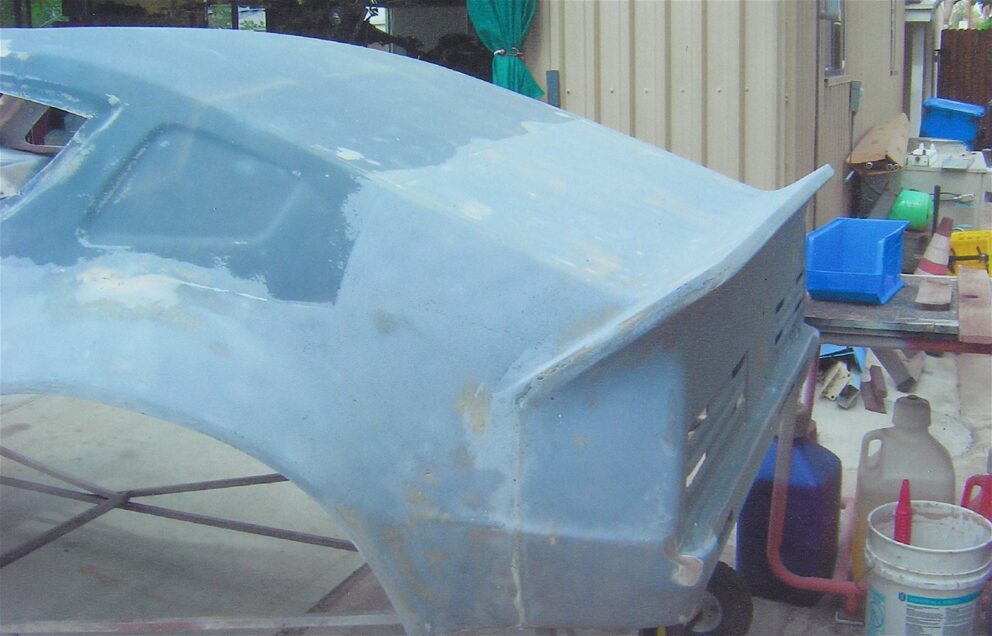
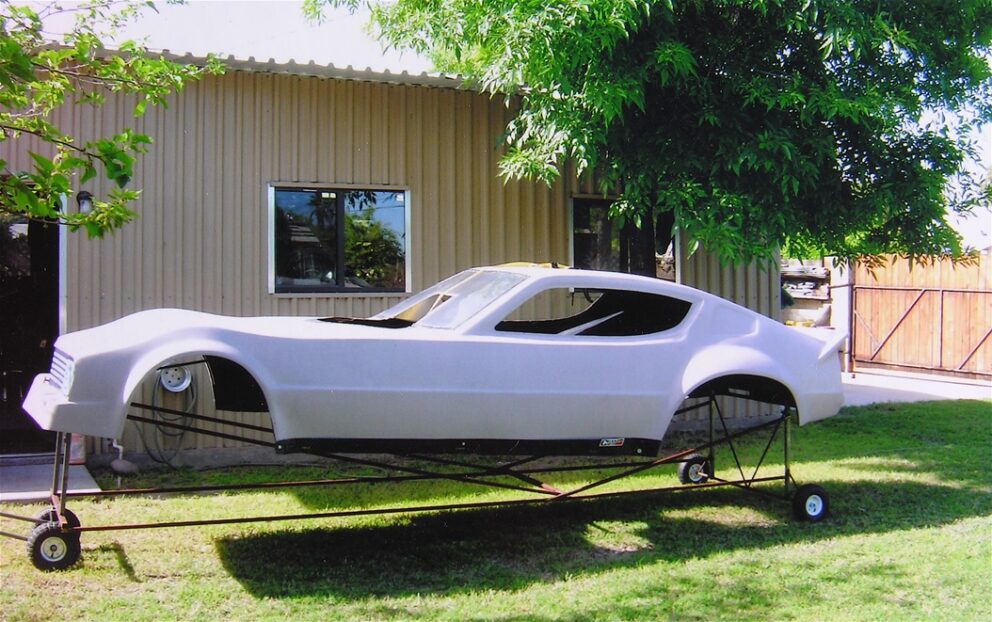
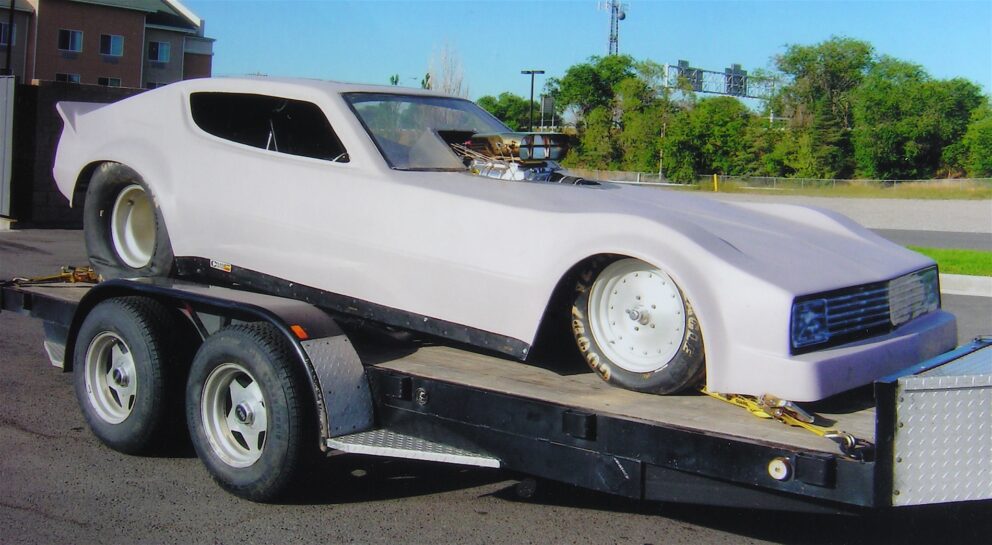
Here’s the J&E Arrow body, brought down to raw gel coat, showing where the roof was spiced into the body after it was removed and lent to Raymond Beadle at the 1981 running of the NHRA Winternationals. As the intense body prep and block sanding took place, the lines of the Plymouth Arrow body had come to the same quality level of when it was campaigned in 1980, early ’81.
PAINT AND GRAPHICS
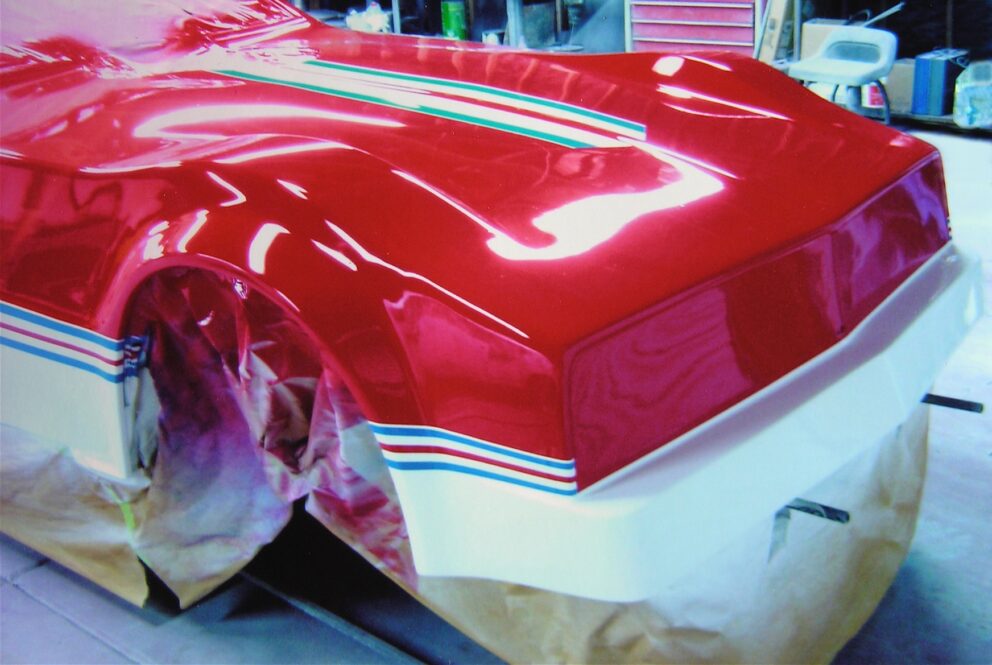
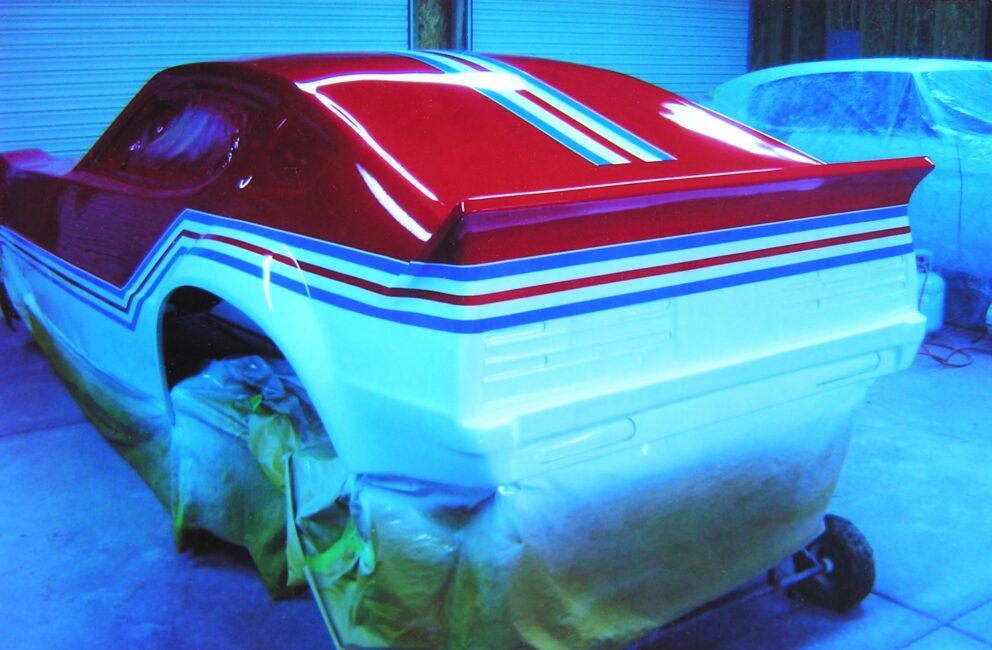
The painting process was intense as all efforts were made to get the striping and paint scheme correct, as well as insuring the fiberglass shell was properly prepped for panel straightness. Veteran painter Lee Webb handled these duties and it took some 200 hours of labor to finish the job.
Author: James Maxwell

0 Comments